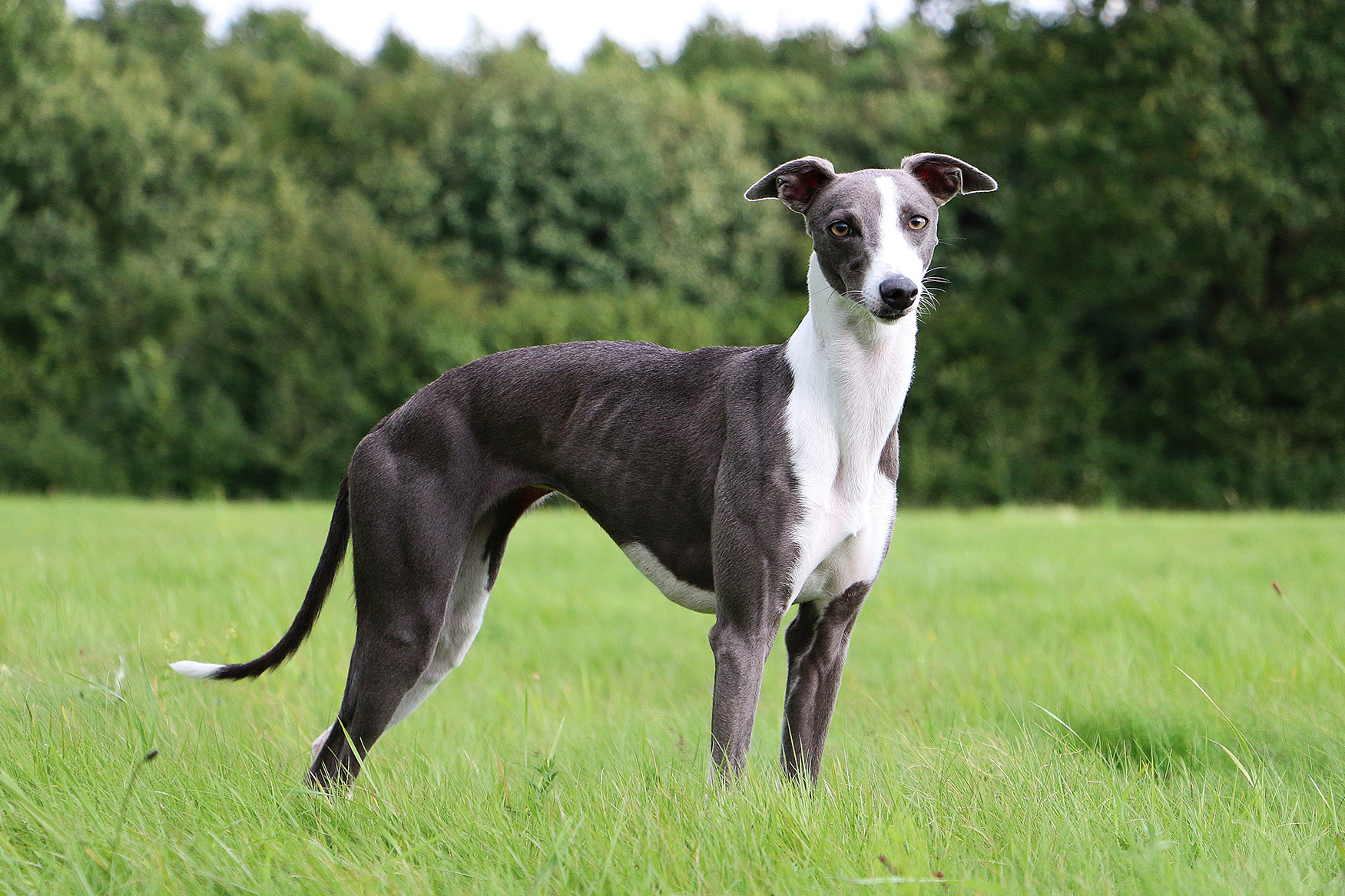Whippet

Description
The Whippet is a sleek and elegant sighthound known for its incredible speed, grace, and gentle demeanor. Often referred to as a "miniature Greyhound," the Whippet shares a common ancestry with the Greyhound but is smaller and more compact. The breed originated in England during the 18th and 19th centuries, where it was prized by working-class communities for its ability to hunt rabbits and other small game. Whippets also excelled in "snap dog" racing and lure coursing, earning them the nickname "the poor man's racehorse." Today, the Whippet is admired both as a competitive athlete in dog sports and as a loving family companion.
Physically, Whippets are medium-sized dogs, with males standing 19 to 22 inches tall at the shoulder and females slightly smaller at 18 to 21 inches. They typically weigh between 25 and 40 pounds. Their slim, muscular build is designed for speed and agility, allowing them to reach running speeds of up to 35 miles per hour. Whippets have short, smooth coats that come in a variety of colors and patterns, including brindle, fawn, black, white, and combinations thereof. Their large, soulful eyes and gentle expression reflect their affectionate and calm nature. Despite their athleticism, Whippets are low-maintenance when it comes to grooming and are relatively clean dogs with minimal shedding.
Whippets are known for their sweet, friendly, and adaptable temperament. They form strong bonds with their families and are typically good with children and other dogs, though their natural prey drive means they may not be well-suited to homes with small pets unless raised alongside them. Whippets are highly trainable but can be somewhat independent, so patience and positive reinforcement are essential for successful training. While they enjoy bursts of high-speed exercise, they are also famous for their love of lounging. Whippets are often referred to as "couch potatoes" when indoors, happily curling up for long naps after a run or walk.
As a breed, Whippets thrive in environments where they can get both mental stimulation and physical activity. They enjoy daily walks, off-leash play in secure areas, or participating in dog sports like agility, lure coursing, or flyball. Despite their athleticism, they adapt well to apartment living as long as their exercise needs are met. Whippets are sensitive dogs, both physically and emotionally, and they prefer a gentle, calm environment. With the right care, they are loyal, loving companions that excel in both active and relaxed settings, making them a perfect choice for many families and individuals.
History
The Whippet is a sleek and agile sighthound with a history that is closely tied to the working-class communities of England in the 18th and 19th centuries. Often referred to as the "poor man's racehorse," the breed was developed by miners and mill workers who needed a fast, efficient dog for hunting small game like rabbits. Its name likely derives from the word *whip*, referencing its incredible speed and agility. Whippets are believed to have descended from small Greyhounds that were crossed with terrier breeds to create a smaller, more economical dog capable of both hunting and racing.
By the 19th century, Whippets had become popular in northern England, particularly in industrial towns. When not used for hunting, they were raced in straight-line sprints, often called "rag races" because a piece of cloth was used to lure the dogs to the finish line. These events became a favorite pastime for working-class communities, earning the Whippet a reputation as both a skilled hunter and an entertaining racer.
As industrialization progressed, Whippets began to gain recognition beyond their working-class roots. They were formally recognized as a breed by The Kennel Club in 1891, and their popularity spread to other countries, including the United States. In 1888, the American Kennel Club (AKC) officially recognized the Whippet, further establishing its status as a beloved companion and sporting dog.
Today, the Whippet is celebrated for its versatility and gentle nature. While it retains its natural hunting and racing instincts, it is also a cherished family companion, known for its affectionate and calm demeanor at home. The breed’s rich history, from its origins as a working dog to its modern role as a companion and competitor, reflects its adaptability and enduring appeal.
Colors
• Black
• Blue
• Brindle
• Cream
• Fawn
• Red
• White


